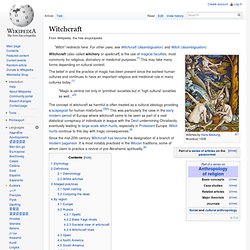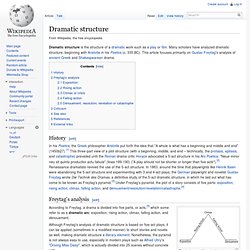

Salamandre. Witchcraft. The belief in and the practice of magic has been present since the earliest human cultures and continues to have an important religious and medicinal role in many cultures today.[1] "Magic is central not only in 'primitive' societies but in 'high cultural' societies as well...

"[2] The concept of witchcraft as harmful is often treated as a cultural ideology providing a scapegoat for human misfortune.[3][4] This was particularly the case in the early modern period of Europe where witchcraft came to be seen as part of a vast diabolical conspiracy of individuals in league with the Devil undermining Christianity, eventually leading to large-scale witch-hunts, especially in Protestant Europe. Etymology[edit] From the Old English wiccecræft, compound of "wicce" ("witch") and "cræft" ("craft").[7] Definitions[edit] As in anthropology, European witchcraft is seen by historians as an ideology for explaining misfortune; however, this ideology manifested in diverse ways.
Ancient Mysteries- Witches. Sabbat_de_sorci%C3%A8res. Love. For information about showing love on Wikipedia, see WP:LOVE and WP:♥.

Love in its various forms acts as a major facilitator of interpersonal relationships and, owing to its central psychological importance, is one of the most common themes in the creative arts.[8] Love may be understood as a function to keep human beings together against menaces and to facilitate the continuation of the species.[9] Definitions The word "love" can have a variety of related but distinct meanings in different contexts. Many other languages use multiple words to express some of the different concepts that in English are denoted as "love"; one example is the plurality of Greek words for "love" which includes agape and eros.[10] Cultural differences in conceptualizing love thus doubly impede the establishment of a universal definition.[11] Although the nature or essence of love is a subject of frequent debate, different aspects of the word can be clarified by determining what isn't love (antonyms of "love").
Sc2bis. John_William_Waterhouse_-_Magic_Circle. Screamin' Jay Hawkins, I Put a Spell on You. Dream Spells - Free Magic Spells. Structure in a linear story. Dramatic structure. History[edit] Freytag's analysis[edit] "Freytag's pyramid", symbolizing his theory of dramatic structure According to Freytag, a drama is divided into five parts, or acts,[5] which some refer to as a dramatic arc: exposition, rising action, climax, falling action, and dénouement.

Exposition[edit] Rising action[edit] In the rising action, a series of related incidents build toward the point of greatest interest. Climax or crisis[edit] The climax is the turning point, which changes the protagonist’s fate. Falling action[edit] During the falling action, the conflict between the protagonist and the antagonist unravels, with the protagonist winning or losing against the antagonist.
Dénouement, resolution, revelation or catastrophe[edit] The comedy ends with a dénouement (a conclusion), in which the protagonist is better off than at the story's outset. Criticism[edit] Freytag's analysis was intended to apply to ancient Greek and Shakespearean drama, not modern drama. See also[edit]